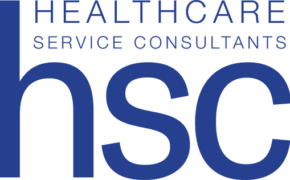Table of Contents
With multiple COVID-19 challenges hitting our communities, healthcare institutions across the globe are “closing their doors.” From a sales and marketing perspective, this raises a myriad of concerns for healthcare IT companies.
Yet, there are workable strategies amid these uncertain times.
1. Identifying COVID-19 Challenges within Sales & Marketing
1.1 Sales
For healthcare IT companies that are accustomed to having their sales team members in the room with influencers and decision-makers, the lack of face-to-face interactions is disconcerting. Those in-person meetings are often so crucial for developing and maintaining personal relationships, never mind closing deals.
Another inevitable result is deferred purchases and reallocated budgets, simply due to hospital departments now existing in crisis mode. Overall, everyone’s attention is diverted to the most urgent matters at hand. Forget face-to-face, you may not even get phone time or email recognition with your contacts.
1.2 Marketing
One of the most immediate COVID-19 challenges to hit healthcare IT marketing has been trade show cancellations.
Again, face-to-face interactions are eliminated. There is no opportunity to solidify customer relationships and initiate engagement with new prospects. The product demos you were planning to showcase are now delayed or moved to be a virtual demo.
Uncertainty about the future may also result in marketing budgets being cut until an end to the pandemic is in sight. This can be a mistake, however, as unmet needs still exist and the need to message healthcare providers and payors persists. Perhaps the scope and message must change, but customers and prospects will want to know you are there now to help and will still be there when this all ends.
2. Four Marketing Strategies to Meet COVID-19 Challenges Head-On
None of these obstacles should incite doom. It’s important for sales teams to maintain their efforts. Visibility is key. Maintain engagement by inquiring about shifting priorities of in-progress deals. Even if in-person contact isn’t feasible, sales shouldn’t assume buyers are unavailable.
Now, more than ever is the time for sales and marketing to align with shifting customer needs. Both teams can get creative and work hand-in-hand to implement solutions. Marketing can also take the lead on certain hurdles, by developing tactics around these four distinct strategies.
a. External Promotional/Awareness-Building
With trade show cancellations, it’s likely some marketing budget is available to reallocate to other tactics. Ramp up cost-effective digital marketing efforts, such as email, video, social media, webinars, and live virtual events. Develop COVID-related messaging where appropriate—especially if you’re company’s products or services offer a potential solution to the pandemic’s fallout.
b. Internal Sales Training/Launches
April and May is a common time for healthcare IT companies to hold annual sales meetings, which often include internal training to support forthcoming product launches. Despite restrictions on communal gatherings, these integral meetings can still take place virtually. Use online platforms to bring your sales and marketing teams together for knowledge exchange and training.
c. Account-Specific Support
No matter the challenges at hand, there will still be deals in progress. Try to manage these to completion as best as possible. Marketing may be able to assist with these efforts on a deal-by-deal basis by contributing account-specific support.
d. Service/Installation/Training
It is imperative clients know your remote service will remain uninterrupted, even if service personnel are working from a home office. Same for installations. Many installations of software products are already done remotely. It’s marketing’s job to reassure customers of these capabilities and to remind them your company’s solutions can be implemented and configured remotely. It might even be possible to train your clients remotely so they can begin using your solution clinically. This can go a long way in supporting your customers’ evolving needs as well as enabling revenue recognition.
3. Special Considerations for Non-Hospital Entities
Not all healthcare IT companies sell to health systems and hospitals. Healthcare payors may actually be experiencing the opposite effects of COVID-19’s impact. They may not be concerned with deferred purchases or reallocated budgets. Attention is likely heightened, not diverted.
For example, an insurance company might want to bolster its mobile app with COVID-19 educational content and patient updates. Healthcare IT companies that work with payors need to recognize those opportunities and commit sales and marketing resources to help them meet these needs.
4. Staying Top of Mind Despite COVID-19 Disruption
With such an unprecedented crisis, now is the time to keep focused on staying top of mind among your customers and prospects. Reach out to them to see how you can help. By developing and implementing customer-centric tactics around these four marketing strategies, you’re affirming your company’s commitment, capabilities, and availability now—as well as when the COVID-19 emergency finally ends.
Photo by Alyssa Ledesma on Unsplash




